Day 5 30/10/2011
The Zweigelt juice tasted so juicy and the flavours were rimeniscent of raspberry. In Austria and Switzerland, I was told that Strüm or fermenting grape juice is very popular here in. The Zweigelt we had in the tank was probably the best grape juice I have tasted in my entire life.
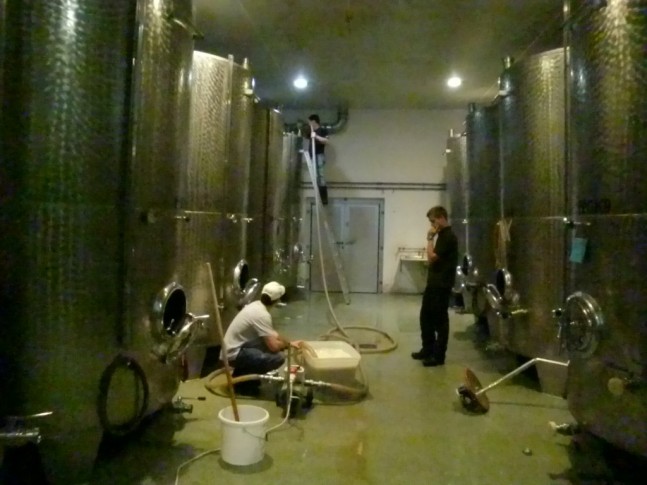
Salomon winery - acid addition
Acid was added to the grape must as this one is destined to be a sparkling wine. It came as a surprise to me that acidification is allowed in Austria. I initially though Austria would be like Germany and the UK in that acid addition is disallowed. Even more of a surprise was that irrigation is allowed here. The better vines are on the higher terraces and it seems that the higher the vines are, the more water it needs. Irrigation here also seems to be done by gravity and pressure rather than by pump. I was told that water comes from the top of the hill and down the rubber tubings in each row of the vineyards.
The Zweigelt has been filtered and cold-stabilised for 2 days. Some of the lees are being transferred to the tank with the racked juice to produce a wine with better texture and complexity. The rest of the juice at the bottom of the tank is being filtered. Although more juice is lost through filtration, this will give the wine better clarity. The rackings are done by pump, not gravity.
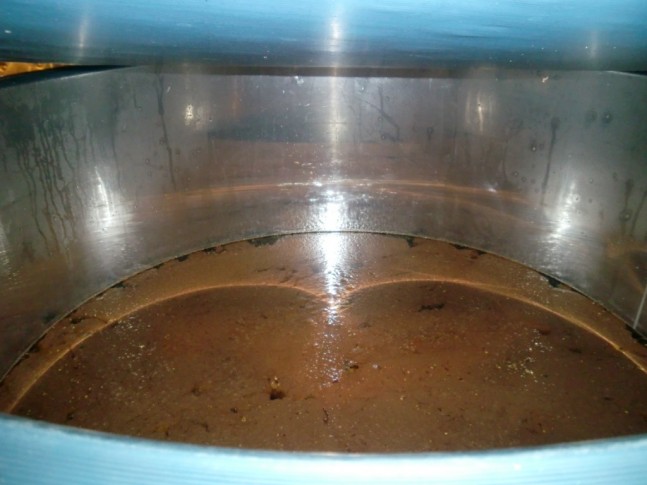
Salomon Winery - Grape Must
After filtration, caustic soda is being added to water to clean out the filter pump. Extra caution was needed as caustic soda can “burn” you if get it onto your skin. Most of the time, sulphur with water and citric acid is used. The citric acid is to allow more of the sulphur to be produced in the sulphur-citric acid solution. This is why wines with high acid tend to get better protection form oxidation because it has more sulphur in it when potassium metabisuphite is added.
As to how acid is added into the wine, a bucket of water is filled with the tartaric powder. Through the use of a pump, the acid solution is pumped into the valve of the tank. It is important to ensure that the tank is not filled with too much wine as during fermentation, carbon dioxide is produced that will fill the wine to the brim and cause the fermenting must to overflow. This is a period in which there must be proper ventilation in the winery or death by asphyxiation can occur.
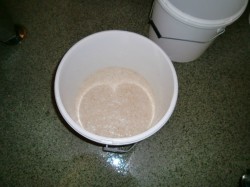
Shalom Salomon yeast solution
To prepare the yeast for ferment, we would measure out how much wine there is in the tank and prepare the amount of yeast needed for that tank. The yeast is added to ten times the amount of water at around 35 to 40 degrees. A small amount of the grape must is added in there and after twenty minutes, the yeast will start to grow and develop in the bucket. More juice is added but in small quantities so as not to shock the yeast with too much sugar. This is done until the right volume of yeast is achieved. From the top of the tank, we would pour the bucket of yeast in only after making sure the temperature of the bucket of yeast and the grape must in the tank are within ten degree Celsius of temperature. This is to prevent the yeast from dying from temperature shocks. Sometimes, carbon chips are added to the must with there are any rotten fruit in there.
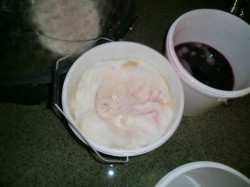
Shalom Salomon yeast solution 40 minutes later
I also learned the difference between free-run and pressing juice. Free-run juice is so much cloudier than pressing juice. It differs from winery what is considered pressing and free-run. In some wineries 0.1 bar of pressure on the grapes is taken as free-run, 0.6 bar is second-run juice and 1 bar is third. There is no fixed rule but what is important is that winemakers taste the juice as it flows out and know which one is of better quality. It is a little like olive oil made from different pressing. The best olive oil is usually the extra virgin olive oil and the same goes for grapes. The free-run juice is greener in colour and has more pure flavours of fruit in there. It is cloudier because many of the particles fall out during the crushing and de-stemming. Therefore, free-run juice is harder to fine and filter than pressing juice. Pressing juice has a more browncolour to it as has less sulphur in it to protect it from oxidation. It also taste more phenolic and is slightly bitter. It contains less particles probably because many of the particles are caught in the skins as the pressure on the grapes increases. I believe that the reason why pressing juice of Chardonnay taste better in new oak barrels better than free-run is because free-run juice is very delicate and get overwhelmed by oak flavours compared to pressing juice.
Saturday is going to be a rest day. A beautiful day for some wine and sun.
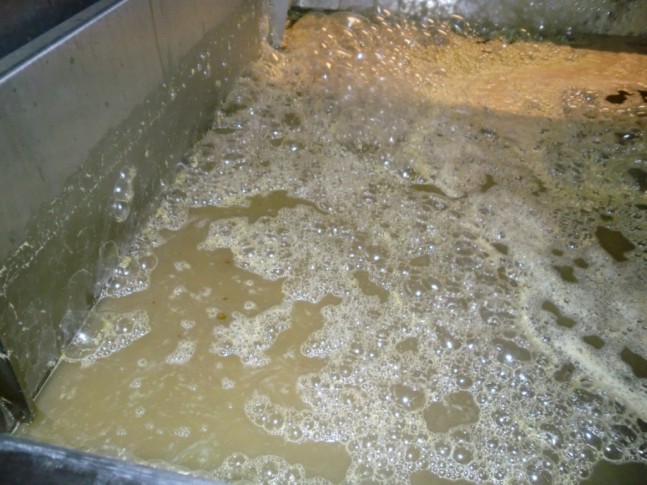
Salomon winery - free run grape juice
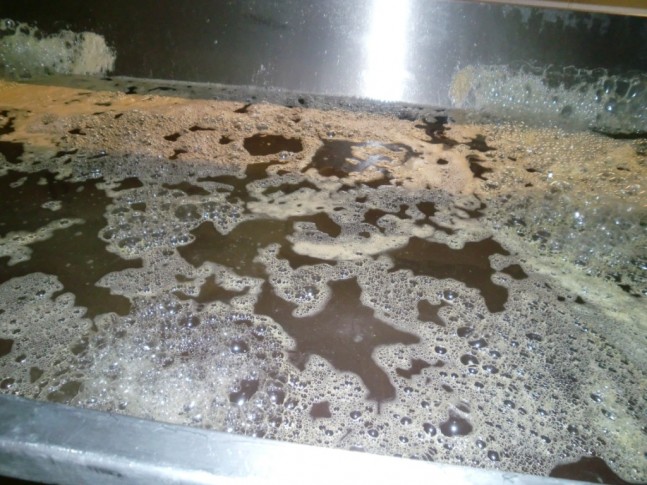
Salomon winery - pressings
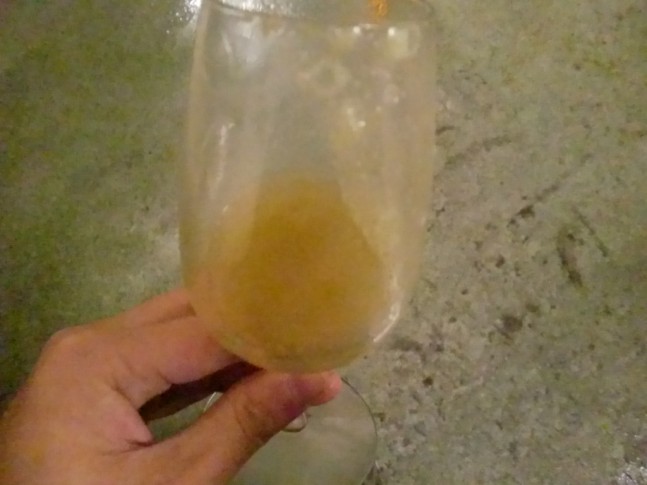
Salomon wine free run close-up
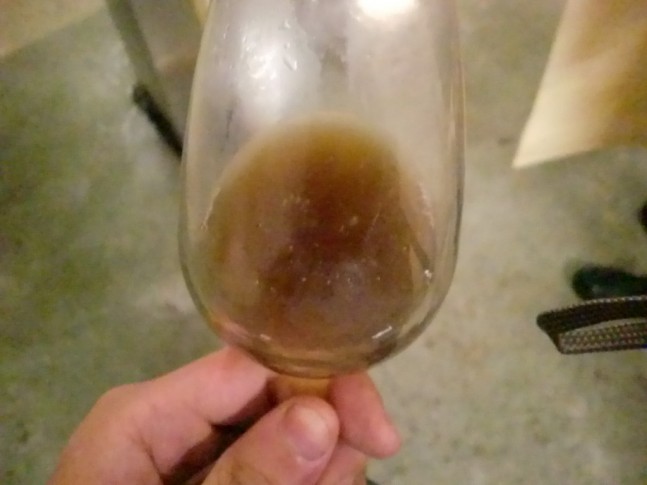
Salomon Winery - pressings close-up
|
|
Tweet |





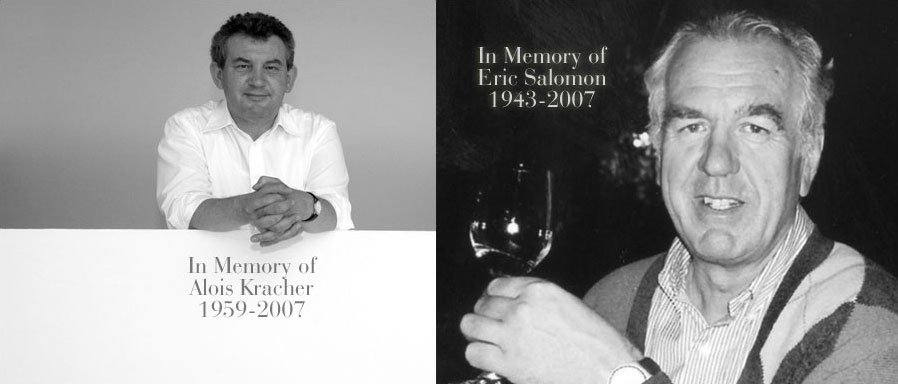
One comment to Sommelier, Shalom Chin – vintage blog from Salomon winery, Krems, Austria – Day 5 | Comments Feed
I totally agree that it is all about what you like. And the more you try the more you will be able to dsecirn what you like and what you don’t like. A wine could be $200 a bottle and a one of a kind, but if you don’t like the way it tastes, what good is that? I like the way you approach wine from a non-snob vantage point!
The comments are closed.